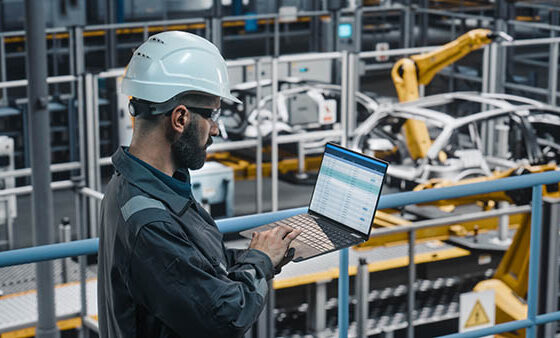How Visual Configuration Transforms Manufacturing Efficiency
Key Takeaways
- Visual configuration enhances customer engagement by offering interactive and personalized product experiences.
- Manufacturers benefit from reduced errors and streamlined production processes.
- Integration of CPQ (Configure, Price, Quote) systems significantly speeds up sales cycles.
- Data-driven insights from visual configuration tools help in continuous product improvement.
- Case studies and real-world examples illustrate the practicality and advantages of visual configuration in manufacturing.
Visual configuration significantly enhances manufacturing efficiency by enabling real-time visualization of product designs and customizations. This technology allows customers and manufacturers to see a digital product model, ensuring accurate specifications and reducing errors before production begins. By integrating visual configuration tools, manufacturers can streamline the design-to-production process, minimize waste, and accelerate time-to-market. Additionally, these tools facilitate better communication between sales, engineering, and production teams, ensuring alignment and improving overall workflow. The ability to instantly visualize and modify product configurations leads to higher customer satisfaction, as it allows for personalized solutions that meet exact needs. Ultimately, visual configuration transforms manufacturing efficiency, driving cost savings and operational excellence.
The Evolution of Manufacturing Efficiency
Manufacturing has undergone a tremendous transformation over the past few decades. Integrating modern tools like the visual product configurator has significantly improved efficiency and elevated customer satisfaction. These innovations allow manufacturers to offer highly detailed product customization options, catering to individual customer preferences and needs. The traditional manufacturing model, which often involves mass production and limited customization, is replaced by a more agile and customer-centric approach.
Visual configuration allows customers to interact with and personalize products through a digital interface. Instead of relying on static images or textual descriptions, customers can manipulate visual models that accurately represent the final product. This transformation makes complex configurations intuitive and accessible, directly translating customer desires into precise specifications. As a result, this process not only enhances customer engagement but also plays a crucial role in minimizing errors related to product specifications, ultimately leading to higher customer satisfaction and retention.
Advantages for Manufacturers
Incorporating visual configuration in manufacturing operations offers numerous advantages, with one of the most immediate being the significant reduction in the need for physical prototypes. Traditional prototyping is often time-consuming and costly, requiring extensive resources for materials and labor. However, with visual configuration, manufacturers can create detailed virtual models that accurately represent the final product, eliminating the need for physical samples. This technological shift accelerates the development process, allowing quicker iterations and adjustments based on customer feedback or design changes. Additionally, it reduces material wastage and labor costs associated with creating multiple prototypes, ultimately leading to significant savings in time and expenses and enhancing overall manufacturing efficiency.
Reducing Production Errors
One of the primary benefits of visual configuration is the considerable reduction in production errors. Accurate 3D models and real-time visualization capabilities ensure that every detail and specification is thoroughly checked before manufacturing begins. This level of precision helps identify potential issues early, thereby reducing mistakes and minimizing material waste. Consequently, manufacturers can achieve higher efficiency, lower costs, and improved product quality, providing a competitive edge in the market.
Enhancing Customer Engagement
Another significant advantage of visual configuration is its ability to provide a more immersive and satisfying customer experience. Traditional purchasing processes often require customers to imagine the final product based on descriptions or limited visuals, leading to uncertainty and dissatisfaction. Visual configuration tools, however, enable buyers to interactively customize and visualize a 3D model of the product they are considering. This interactive process caters to the growing demand for personalization and allows customers to see exactly what they are getting, setting realistic expectations. As a result, customer satisfaction is enhanced, and the likelihood of post-purchase dissatisfaction or returns is significantly reduced. This technology creates a more engaging and transparent buying experience, fostering customer trust and loyalty.
Faster Sales Cycles with CPQ Systems
Integrating CPQ (Configure, Price, Quote) systems with visual configuration tools further accelerates sales. CPQ systems enable sales teams to generate accurate quotes based on the customer’s specifications quickly. This efficiency eliminates the back-and-forth in the quoting process, shortening the sales cycle. According to a Gartner study, companies using CPQ software can close deals approximately 20% faster than their non-CPQ-using counterparts, highlighting the significant impact of these tools on operational efficiency and customer satisfaction.
Data-Driven Insights
Visual configuration tools generate valuable data that can be analyzed to gain insights into customer preferences and behaviors. This data can provide a deeper understanding of what customers seek, allowing manufacturers to tailor their offerings to meet market demands more effectively. Additionally, visual configuration tools facilitate the continuous feedback loop, which enables manufacturers to iterate on product designs and features based on real-world usage and customer feedback. This level of data-driven decision-making can lead to constant product improvement, innovation, and a stronger market position.
Real-World Applications and Case Studies
Companies across various industries are adopting visual configuration tools, illustrating their widespread applicability and effectiveness. One notable example is the automotive industry, where customers can customize vehicles in real-time and visualize an accurate 3D representation before purchasing. This ability to personalize everything from paint colors to interior features has enhanced customer satisfaction and streamlined the sales process. The result is a significant reduction in returns and post-purchase modifications, ultimately saving time and resources for both the manufacturer and the customer.
Conclusion
Visual configuration is undeniably a game-changer in manufacturing, offering many benefits ranging from improved efficiency to enriched customer experiences. As more manufacturers adopt these advanced technologies, the future looks promising for a more streamlined, error-free, and customer-centric approach to manufacturing. The dual advantages of enhanced operational efficiency and increased customer satisfaction make visual configuration an essential tool for modern manufacturers looking to stay competitive in an ever-evolving market landscape.


